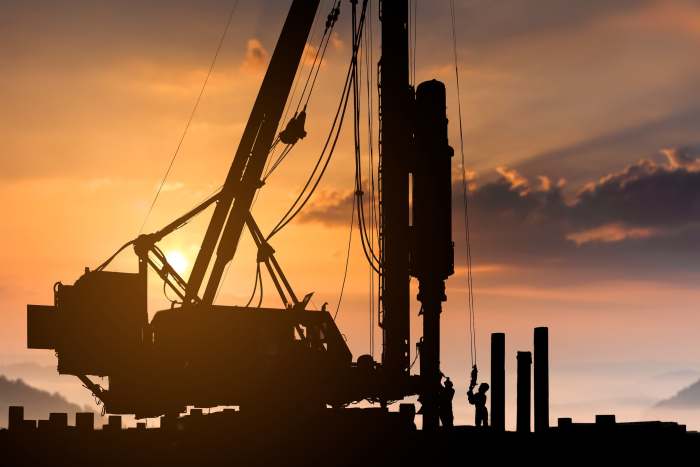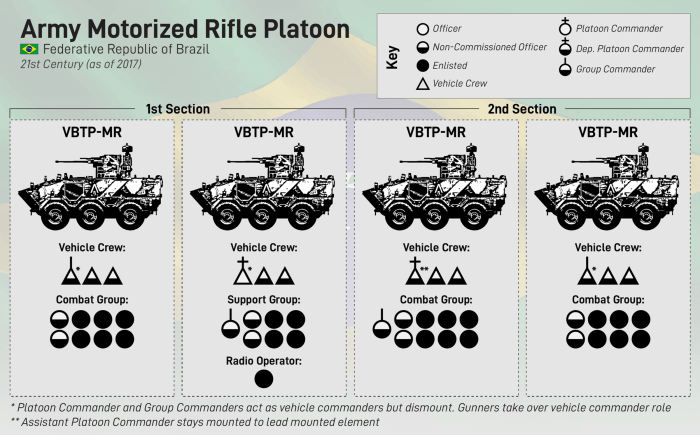Mechanized equipment includes motor vehicles and plays a pivotal role in modern industries, revolutionizing productivity and efficiency. From construction to transportation, these machines have become indispensable tools, driving economic growth and shaping our daily lives.
This comprehensive guide explores the definition, types, functions, advantages, and disadvantages of mechanized equipment. We delve into its applications across various industries, examining its impact on the workforce and the latest technological advancements.
1. Definition and Scope of Mechanized Equipment

Mechanized equipment encompasses a broad range of motorized vehicles designed to perform specific tasks. These machines are typically powered by engines, such as diesel or electric motors, and are utilized in various industries to enhance productivity and efficiency.
Examples of motorized vehicles that fall under the category of mechanized equipment include:
- Tractors
- Trucks
- Forklifts
- Excavators
- Bulldozers
2. Types and Functions of Mechanized Equipment
Types of Mechanized Equipment
Mechanized equipment can be classified into various types based on their specific functions and applications. Some common types include:
- Earthmoving equipment: Designed for tasks such as excavation, grading, and transportation of materials. Examples include excavators, bulldozers, and graders.
- Material handling equipment: Used for lifting, moving, and storing materials. Examples include forklifts, cranes, and conveyors.
- Construction equipment: Specifically designed for construction tasks such as drilling, welding, and cutting. Examples include concrete mixers, asphalt pavers, and scaffolding.
- Agricultural equipment: Used for farming and agricultural operations. Examples include tractors, harvesters, and irrigation systems.
Comparison of Equipment Types
| Type | Function | Examples | Applications |
|---|---|---|---|
| Earthmoving equipment | Excavation, grading, material transportation | Excavators, bulldozers, graders | Construction, mining, agriculture |
| Material handling equipment | Lifting, moving, storing materials | Forklifts, cranes, conveyors | Warehousing, manufacturing, logistics |
| Construction equipment | Construction tasks: drilling, welding, cutting | Concrete mixers, asphalt pavers, scaffolding | Construction, infrastructure development |
| Agricultural equipment | Farming and agricultural operations | Tractors, harvesters, irrigation systems | Agriculture, food production |
3. Advantages and Disadvantages of Using Mechanized Equipment

Advantages
The use of mechanized equipment offers several advantages:
- Increased efficiency and productivity: Machines can perform tasks faster and more efficiently than humans, resulting in increased output.
- Reduced labor costs: Mechanization can reduce the number of workers required for a particular task, leading to lower labor costs.
- Improved safety: Mechanized equipment can handle hazardous or repetitive tasks, reducing the risk of accidents and injuries to workers.
- Enhanced accuracy and precision: Machines can perform tasks with greater accuracy and precision than manual labor, ensuring consistent results.
Disadvantages, Mechanized equipment includes motor vehicles and
Despite its advantages, mechanized equipment also has potential drawbacks:
- High capital costs: Acquiring and maintaining mechanized equipment can be expensive.
- Job displacement: Mechanization can lead to job displacement as machines replace human workers.
- Environmental impact: The use of fossil fuels in mechanized equipment can contribute to air and noise pollution.
- Maintenance and repair costs: Mechanized equipment requires regular maintenance and repairs, which can be costly.
| Advantages | Disadvantages |
|---|---|
| Increased efficiency and productivity | High capital costs |
| Reduced labor costs | Job displacement |
| Improved safety | Environmental impact |
| Enhanced accuracy and precision | Maintenance and repair costs |
4. Applications of Mechanized Equipment in Various Industries: Mechanized Equipment Includes Motor Vehicles And

Mechanized equipment finds extensive applications in a wide range of industries, including:
- Construction: Earthmoving equipment, construction equipment, and material handling equipment are essential for building and infrastructure development.
- Agriculture: Agricultural equipment plays a crucial role in farming, crop production, and food processing.
- Manufacturing: Material handling equipment and robotic systems are used in manufacturing processes to enhance efficiency and automation.
- Transportation and logistics: Trucks, forklifts, and conveyors are vital for transporting and handling goods in supply chains.
- Mining: Earthmoving equipment and specialized mining equipment are used for extracting and processing minerals.
Case Study:
In the construction industry, the use of mechanized equipment has significantly reduced project timelines and improved safety. For example, the introduction of concrete pumps and concrete mixers has revolutionized the concrete pouring process, resulting in faster construction and improved structural integrity.
5. Trends and Advancements in Mechanized Equipment Technology
The field of mechanized equipment technology is constantly evolving, with advancements focused on improving efficiency, safety, and sustainability:
- Autonomous vehicles: Self-driving vehicles are being developed for use in various industries, including construction and mining.
- Electric-powered equipment: Electric motors are replacing diesel engines in mechanized equipment, reducing emissions and noise pollution.
- Remote operation: Equipment can now be operated remotely, allowing operators to work from a safe distance.
- Advanced sensors and control systems: Sensors and control systems are being integrated into mechanized equipment to improve safety and efficiency.
Emerging technologies, such as artificial intelligence and machine learning, are also being explored to further enhance the capabilities of mechanized equipment.
6. Impact of Mechanized Equipment on the Workforce
The use of mechanized equipment has a significant impact on the workforce:
- Job displacement: Mechanization can lead to job displacement as machines take over tasks previously performed by humans.
- Reskilling: Workers displaced by mechanization may need to acquire new skills and training to adapt to changing job requirements.
- Increased productivity: Mechanization can lead to increased productivity, which can result in job creation in other areas.
Recommendations for mitigating the negative effects of mechanization on the workforce include:
- Investing in education and training programs to equip workers with the skills needed for new jobs.
- Providing support and resources for workers who are displaced by mechanization.
- Promoting policies that support job creation and economic growth.
FAQ Section
What is the definition of mechanized equipment?
Mechanized equipment refers to machines powered by engines or motors, designed to perform specific tasks, often replacing manual labor.
What are some examples of mechanized equipment?
Examples include motor vehicles, construction equipment (e.g., excavators, bulldozers), agricultural machinery (e.g., tractors, harvesters), and industrial machinery (e.g., conveyor belts, assembly lines).